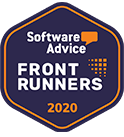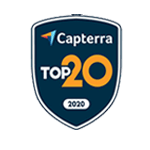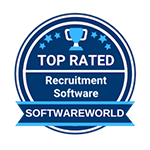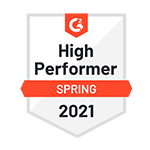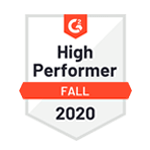Talent acquisition is a crucial process for any organization that seeks to remain competitive in the modern business landscape. With the increasing demand for skilled and talented workers, organizations must be able to attract and retain top talent to ensure their success. In this article, we will explore the various strategies and practices that can be used to improve talent acquisition and retention in the workplace.
What is Talent Acquisition?
Talent acquisition is the process of identifying, attracting, and retaining skilled and talented employees for an organization. It involves various activities, such as job posting, resume screening, interviewing, and onboarding, to ensure that the organization has the necessary human resources to achieve its goals.
What is Talent Acquisition Software?
Talent acquisition software is an innovative solution that has revolutionized the recruitment process. It is a suite of tools that can automate and streamline various recruitment tasks, making the process faster, more efficient, and more accurate.
This software includes a wide range of applications that can help recruiters manage job postings, resumes, and candidate information. It also includes tools for sourcing potential candidates through various channels, such as social media platforms and online job boards. Moreover, it can help recruiters conduct interviews, assess candidate suitability, and track their progress through the hiring process.

The main advantage of talent acquisition software is that it can provide recruiters with valuable insights into recruitment trends and practices. By analyzing data on candidate sourcing, screening, and hiring, recruiters can identify areas for improvement and optimize their recruitment strategies. They can also use this data to make informed decisions about hiring, such as determining the best channels for sourcing candidates, or identifying the most effective screening methods.
With the right talent acquisition software, recruiters can attract and hire the best candidates while saving time and resources. The software can help automate repetitive tasks, such as resume screening, and free up recruiters’ time to focus on more strategic tasks, such as building relationships with candidates.
Talent Acquisition Process
The talent acquisition process is a crucial part of any organization’s success. It involves a series of steps that must be taken to ensure that the right people are hired for the right positions. Here is a detailed explanation of the different stages involved in the talent acquisition process:
- Identifying job vacancies: The first step in the talent acquisition process is to identify job vacancies that need to be filled. This can be done by analyzing the company’s staffing needs and identifying gaps in the current workforce. Once job vacancies have been identified, they can be posted on various job boards and social media platforms to attract potential candidates.
- Sourcing potential candidates: After job vacancies have been posted, the next step is to source potential candidates. This can be done through various methods, such as employee referrals, job fairs, and online searches. Employee referrals are a great way to find high-quality candidates, as current employees can vouch for their skills and work ethic.
- Screening potential candidates: Once potential candidates have been identified, the next step is to screen them. This can be done using various tools, such as pre-employment assessments, to determine their suitability for the position. Pre-employment assessments can help identify candidates who possess the necessary skills and qualifications for the job.
- Conducting interviews: After screening potential candidates, the hiring team should invite the most promising candidates for an interview, which can be conducted in person or remotely, depending on the circumstances. During the interview, the hiring team should assess the candidate’s qualifications, work experience, and personality to determine if they are a good fit for the position and the organization.
- Conducting background checks: After the interview stage, the organization should conduct background checks on the most promising candidates. This is important to ensure that the candidate has a clean record and is a good fit for the company culture.
- Extending job offers: After selecting the best candidates, the next step is to extend job offers. This can be done by phone, email, or in person. The job offer should include details about the position, salary, benefits, and start date.
- Onboarding new hires: Once the job offer has been accepted, the next step is to onboard the new hires into the organization. This involves providing them with the necessary training and resources to ensure that they can perform their job duties effectively.
Why is Talent Acquisition Important?
Talent acquisition is crucial for organizations to succeed in today’s competitive business environment. Here are some reasons why:
- Enhancing organizational performance: Skilled and talented employees are a critical factor in an organization’s success. A strong talent acquisition strategy ensures that organizations can attract and retain top talent, which can enhance organizational performance by driving growth and innovation.
- Maintaining competitiveness: In today’s business landscape, organizations must be able to attract and retain the best talent to remain competitive. By investing in talent acquisition, organizations can stay ahead of their competitors by hiring the best candidates and building a team of skilled and diverse employees.
- Reducing costs: Effective talent acquisition strategies can help reduce turnover rates, which can be costly for organizations. High turnover rates incur associated costs such as recruitment, training, and lost productivity. By hiring the right candidates and retaining top talent, organizations can save costs associated with these factors.
Talent acquisition is not just about filling open positions; it is a strategic process that can have a significant impact on an organization’s success. By investing in talent acquisition and focusing on attracting and retaining top talent, organizations can achieve their goals, remain competitive, and reduce costs in the long run.
Best Practices for Talent Acquisition
To improve talent acquisition and retention, organizations can implement several best practices, including:
Employer Branding
Establishing a strong employer brand is crucial to attracting top talent. This involves creating a positive image of the organization and its culture through various channels, such as social media, job postings, and employee referrals. Organizations should highlight their unique selling points, such as a positive work-life balance, opportunities for career growth, and a supportive work environment.
Candidate Experience
Providing a positive candidate experience is essential to attracting and retaining top talent. The recruitment process should be transparent and efficient, providing candidates with a positive impression of the organization. This includes timely communication, clear job descriptions, and respectful treatment. Organizations should also seek feedback from candidates to continuously improve their recruitment process.
Diverse Recruitment
Diversifying recruitment efforts is critical to attracting a wide range of candidates. Organizations should consider targeting underrepresented groups, such as women, minorities, and individuals with disabilities. This can include partnering with organizations that focus on diversity and inclusion or using targeted recruitment campaigns.
Hiring Process Automation
Automating the hiring process can streamline the recruitment process, saving time and resources while improving the quality of hires. This includes tools such as applicant tracking systems, video interviewing, and pre-employment assessments. Automation can also reduce the risk of bias in the recruitment process by eliminating human error and providing objective data.
Continuous Talent Management
Effective talent acquisition does not end with the hiring process. Organizations must also implement ongoing talent management practices, such as career development, performance management, and succession planning, to retain top talent and ensure continued growth. This includes providing opportunities for training and development, regular feedback and coaching, and clear career paths.
By implementing these best practices, organizations can improve their talent acquisition and retention, which can lead to increased productivity, innovation, and overall success.
Best Talent Acquisition Software
Let’s take a closer look at some of the best talent acquisition software available and explore their key features.
Applicant Tracking Systems (ATS)
Recruiters can use ATS software to manage job postings, resumes, and candidate information. These tools enable recruiters to track candidates through the recruitment process, from application submission to hiring decision. ATS software can also automate many aspects of recruitment, such as resume screening and scheduling interviews, saving time and resources.
Sourcing Tools
Video interviewing tools can enable multiple stakeholders to review recorded interviews and provide a more objective assessment of candidates. These tools use advanced algorithms and data analytics to scour the internet for relevant candidate information, including resumes, work history, and social media profiles. Therefore, sourcing tools can save recruiters time by automating candidate research and can help identify candidates who may not be actively looking for a new position.
Assessment and Testing Software
Assessment and testing software enables recruiters to evaluate candidates’ skills, knowledge, and aptitude for the job. These tools can include cognitive and behavioral assessments, skills tests, and personality tests. In addition, assessments can help recruiters make more informed hiring decisions and reduce the risk of hiring the wrong candidate. Assessment and testing software can also help identify areas for candidate development and training.
Video Interviewing Tools
Video interviewing tools allow recruiters to conduct interviews remotely, saving time and resources. These tools can include one-way or two-way video interviews, enabling recruiters to conduct interviews with candidates regardless of their location. Multiple stakeholders can review recorded interviews and provide a more objective assessment of candidates using video interviewing tools that allow for recording and playback of interviews.
When selecting the best talent acquisition software for your organization, it’s important to consider your specific recruitment needs and goals. In addition, you should also consider factors such as ease of use, compatibility with your existing systems, and customer support. Therefore, by selecting the right talent acquisition software, you can improve the quality of your hires, reduce the time and cost of hiring, and gain valuable insights into your recruitment practices.
Conclusion
In conclusion, talent acquisition is a critical process for organizations seeking to remain competitive in the modern business landscape. By implementing effective talent acquisition strategies and practices, organizations can attract and retain top talent, enhance organizational performance, and reduce costs. Therefore, with the increasing demand for skilled and talented workers, organizations must prioritize talent acquisition to remain successful.
Looking to improve your talent acquisition process? Try RecruitBPM today and streamline your hiring efforts. With advanced features such as applicant tracking and onboarding, RecruitBPM can help you attract, hire, and retain the best talent for your organization. Don’t wait, sign up now and take your talent acquisition strategy to the next level.
FAQs
Q: What is the difference between talent acquisition and recruitment?
A: People often use talent acquisition and recruitment interchangeably, but there exists a subtle difference between them. Talent acquisition is a broader process that encompasses all aspects of attracting and retaining top talent, including sourcing candidates, employer branding, and ongoing talent management. On the other hand, recruiters primarily focus on filling open positions with qualified candidates. While both processes are essential, talent acquisition takes a more strategic and holistic approach to talent management.
Q: How can organizations measure the success of their talent acquisition efforts?
A: Measuring the success of talent acquisition efforts is crucial to optimizing the recruitment process and ensuring that the organization is attracting and retaining top talent. There are several metrics that organizations can use to measure success, including:
- Time-to-fill: This metric measures the time it takes to fill open positions. A shorter time-to-fill indicates that the recruitment process is efficient and effective.
- Cost-per-hire: This metric measures the cost of recruiting and hiring a new employee. Lower costs indicate that the recruitment process is efficient and cost-effective.
- Employee retention rates: This metric measures the percentage of employees who stay with the organization over a given period. High retention rates indicate that the organization is successfully retaining top talent.
So, other metrics that organizations can use to measure success include candidate satisfaction rates, diversity and inclusion metrics, and quality of hire metrics. In addition, by tracking these metrics, organizations can identify areas for improvement and continuously optimize their talent acquisition efforts.





